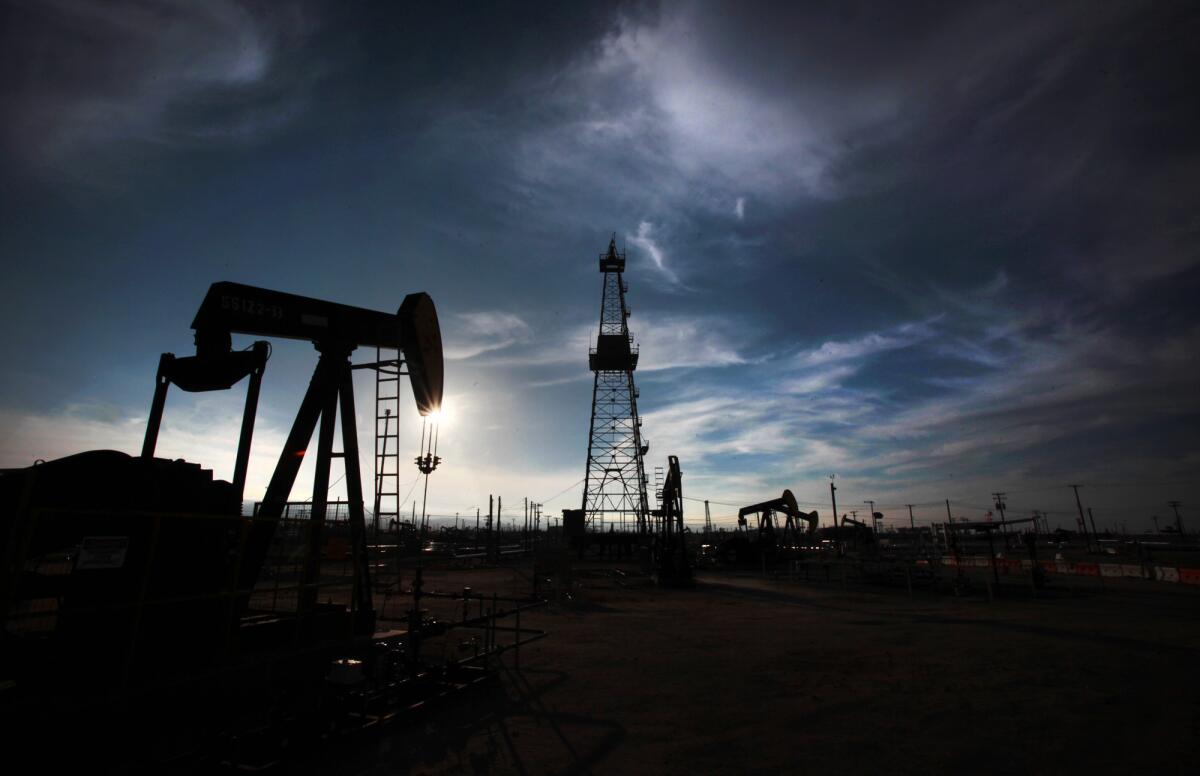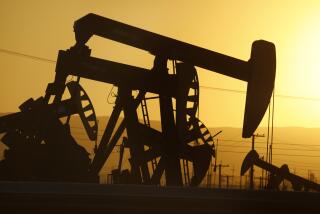Editorial: Monterey Shale finding is a setback and an opportunity for California

A new federal report that drastically downgrades the short-term oil potential of the Monterey Shale is the most official word on the subject, but not the first. Two years ago, a Wall Street analyst, in a report titled “The Mystery of the Missing Monterey Shale,” outlined possible reasons why the oil-rich California geological formation had been a disappointment in recent years and was unlikely to produce a fracking boom like the one in North Dakota. Jumbled geology, multiple fault lines and thick, sticky oil were among the explanations.
The latest report by the U.S. Energy Information Administration reduces by 96% the 2011 estimate by a government contractor of how much oil can be extracted via existing technology: 600 million barrels instead of 13.7 billion barrels.
The information is probably disappointing to Gov. Jerry Brown and others who believed California was on the verge of creating close to 3 million new jobs and $25 million a year in additional tax revenue through fracking of the Monterey Shale, which runs under much of the Central Valley and sections of the coast, including Los Angeles. But as much as the state needs the bonanza, there is another way of looking at the news: The difficulties in drilling, fracking or otherwise tapping the shale’s riches give California an important chance to pause and study the matter.
The Monterey Shale isn’t going anywhere; petroleum companies, once they’re closer to exhausting the more easily obtained oil in North Dakota’s Bakken formation, will almost certainly work to develop the technology that unlocks California’s oil deposits. But now there is time to observe the longer-term environmental and economic impacts of fracking.
California officials can analyze what’s happening in other states and examine the academic and government studies that will be emerging. The U.S. Environmental Protection Agency is still working on a comprehensive study that has been in the works since 2011. California would have time to conduct its own studies, especially on how fracking might affect earthquake risk in an area so riddled with faults. Better yet, it would have time to build a more robust portfolio of sustainable energy projects that do not contribute to climate change, and to rethink whether it wants to continue relying on the fossil fuels that are so damaging to the environment.
The state already has begun its studies, and it should not use the latest news as a reason to put off its work. In addition, the Legislature should pass a bill to impose a moratorium on fracking and other well-stimulation activities until those studies are completed. When the petroleum industry has developed more effective technologies for extracting the shale’s resources, California will be better prepared because of the delay.
More to Read
A cure for the common opinion
Get thought-provoking perspectives with our weekly newsletter.
You may occasionally receive promotional content from the Los Angeles Times.










